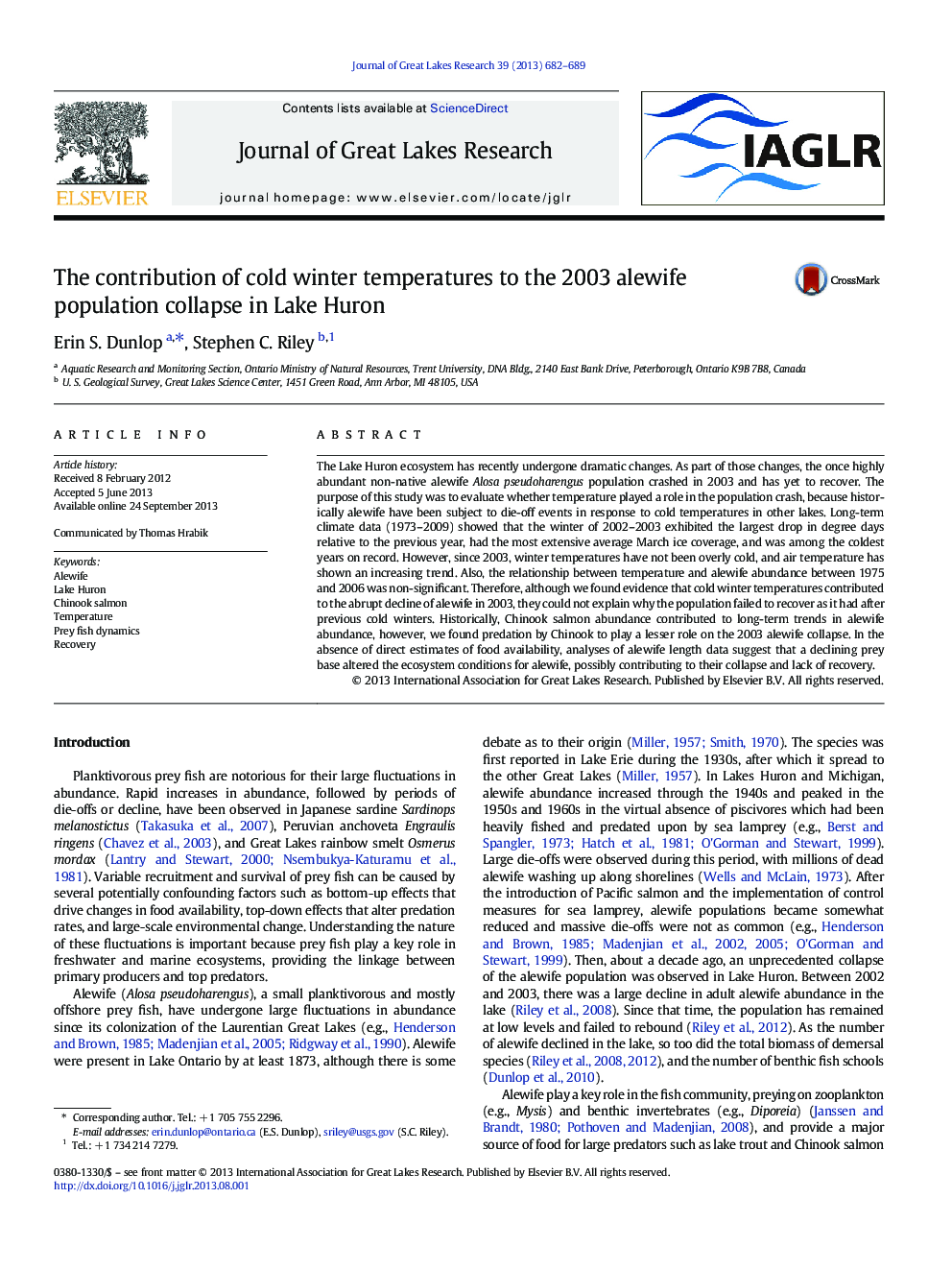| کد مقاله | کد نشریه | سال انتشار | مقاله انگلیسی | نسخه تمام متن |
|---|---|---|---|---|
| 4398516 | 1306693 | 2013 | 8 صفحه PDF | دانلود رایگان |

• Long-term trends and interactions in the abundance of alewife and Chinook salmon are examined.
• Cold winter temperatures contributed to the 2003 collapse of alewife.
• Temperature alone did not account for its failure to recover.
• An altered prey base prevented the alewife's recovery after collapse.
• To a lesser degree, high predation rates prevented the alewife's recovery after collapse.
The Lake Huron ecosystem has recently undergone dramatic changes. As part of those changes, the once highly abundant non-native alewife Alosa pseudoharengus population crashed in 2003 and has yet to recover. The purpose of this study was to evaluate whether temperature played a role in the population crash, because historically alewife have been subject to die-off events in response to cold temperatures in other lakes. Long-term climate data (1973–2009) showed that the winter of 2002–2003 exhibited the largest drop in degree days relative to the previous year, had the most extensive average March ice coverage, and was among the coldest years on record. However, since 2003, winter temperatures have not been overly cold, and air temperature has shown an increasing trend. Also, the relationship between temperature and alewife abundance between 1975 and 2006 was non-significant. Therefore, although we found evidence that cold winter temperatures contributed to the abrupt decline of alewife in 2003, they could not explain why the population failed to recover as it had after previous cold winters. Historically, Chinook salmon abundance contributed to long-term trends in alewife abundance, however, we found predation by Chinook to play a lesser role on the 2003 alewife collapse. In the absence of direct estimates of food availability, analyses of alewife length data suggest that a declining prey base altered the ecosystem conditions for alewife, possibly contributing to their collapse and lack of recovery.
Journal: Journal of Great Lakes Research - Volume 39, Issue 4, December 2013, Pages 682–689